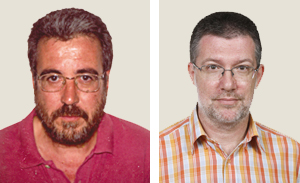IN DEPTH
The culture of peace in the classroom

Joan Camós i Albert Marzà
It is an indisputable fact that the road to a culture of peace is full of difficulties. It is hard to promote it successfully in a society that, despite approving of the word, proposes measures that are far removed from it.
These problems also arise when we attempt to transfer the perspective of peace into the classroom: in several subjects in the curriculum.
The textbook supervisory committee of the ICIP has studied one subject, social sciences, in the final year of secondary education. The fact that the curriculum proposes studying modern history in the final academic year of mandatory education, a period that is strongly defined by the amount and intensity of armed conflicts, means that this study is a good indicator of the challenges that the culture of peace faces in the field of formal education.
The first obstacle that we are faced with is the curriculum that, despite moving away from the traditional approaches in which the use of memorising and of exalting military feats were the order of the day, continues to demand the absorption of a great deal of information by students and continues to emphasise the important role of armed conflicts.
In this respect the analysed textbooks do not contradict what society does as a whole. Both audiovisual production (films and television series) and the budgets of the Ministry of Defence show a clearly favourable inclination to a culture of weapons and to the use of violence. And it is just as well that the textbooks published in Catalan (which are the ones we have analysed) in general propose a search for the causes of events and reflection about them, aspects that our society does not normally promote.
Neither the curriculum nor the textbooks that teachers use are sensitive to the culture of peace, or are only slightly so. Excluding certain subjects, relegating others to the secondary part of texts or using inappropriate language mean that, despite the improvements compared to previous years, the overall focus is a far cry from promoting a culture of peace amongst students.
Despite this, teachers still have the possibility of emphasising what the curriculum allows and the textbooks have introduced. The problem is that not all teachers are receptive to such issues, for which they have also received no specific training and if they have done then they do not always find sufficient support from colleagues in departments or staff meetings in order to take a risk by supporting a truly new perspective; that of peace, compared to the traditional way of teaching the subject.
At this time there is no external test at the end of secondary education that obliges students to study certain contents or to do so in a specific way. However, on the horizon there is a plan for what is known as the Wert Law, which could make it even more difficult to approach education in support of a culture of peace for the social sciences in the final year of secondary education and for other subjects that, within the leeway given by their curriculums, could also do so.
The list of problems is long and therefore the list of solutions should also be long. It would be necessary to change several points in order to achieve a change in the teaching perspective of the social sciences in the final year of secondary education and that of other subjects at all levels: changes to the curriculum, to teacher training, the preparation of alternative materials to help teaching in the classroom etc.
It is a complex challenge that needs to be taken on in the medium term. However, the problems do not represent an insurmountable obstacle. What is needed is the determination to see it through. The study prepared by the Textbook Supervisory Committee, "Anàlisi dels llibres de text de Ciències Socials des d'una perspectiva de Pau (Analysis of Social Science Textbooks from a Perspective of Peace) (Quart d'ESO, 2008-2011)", is a tool for this process.